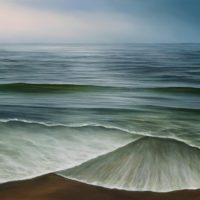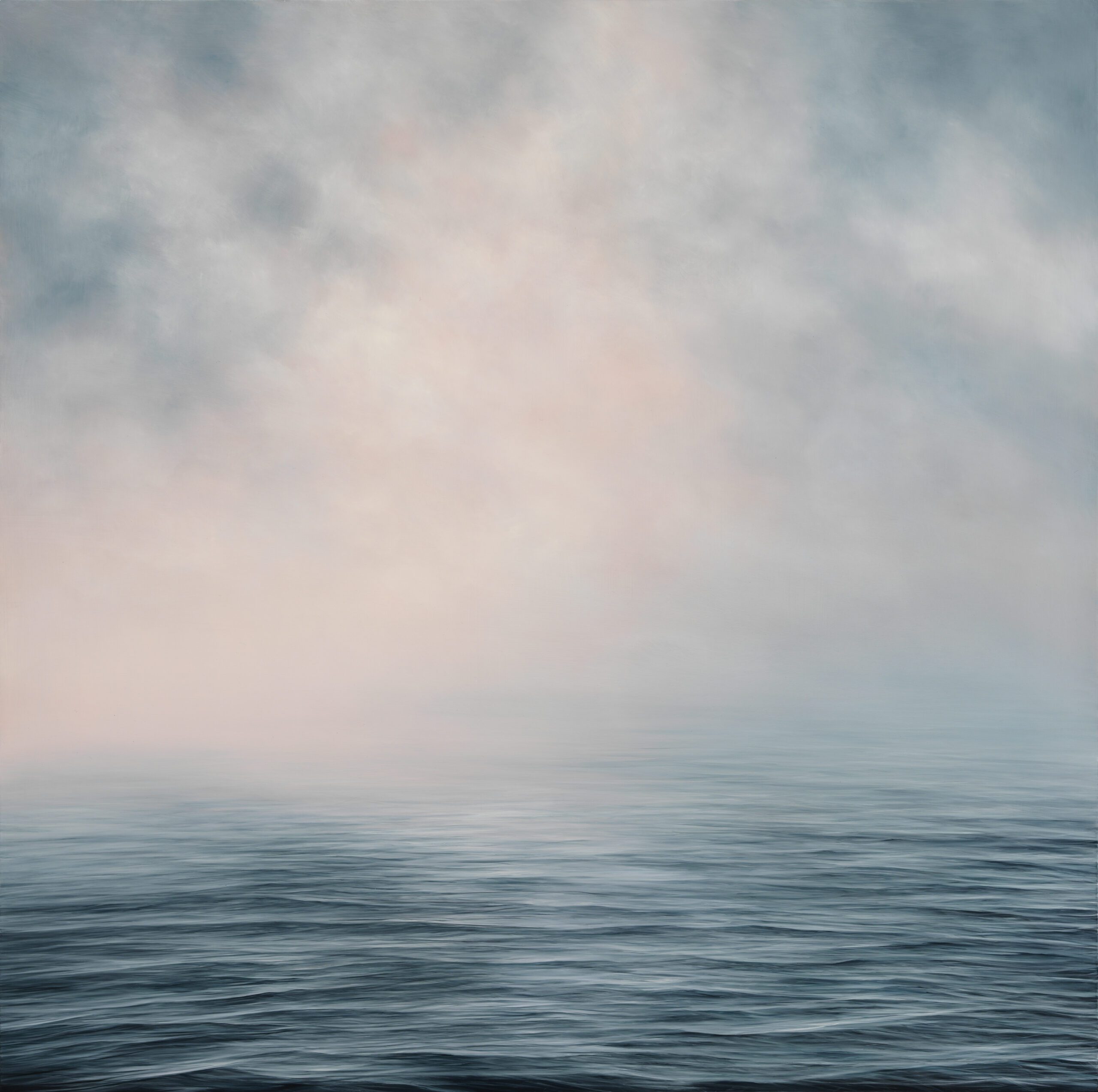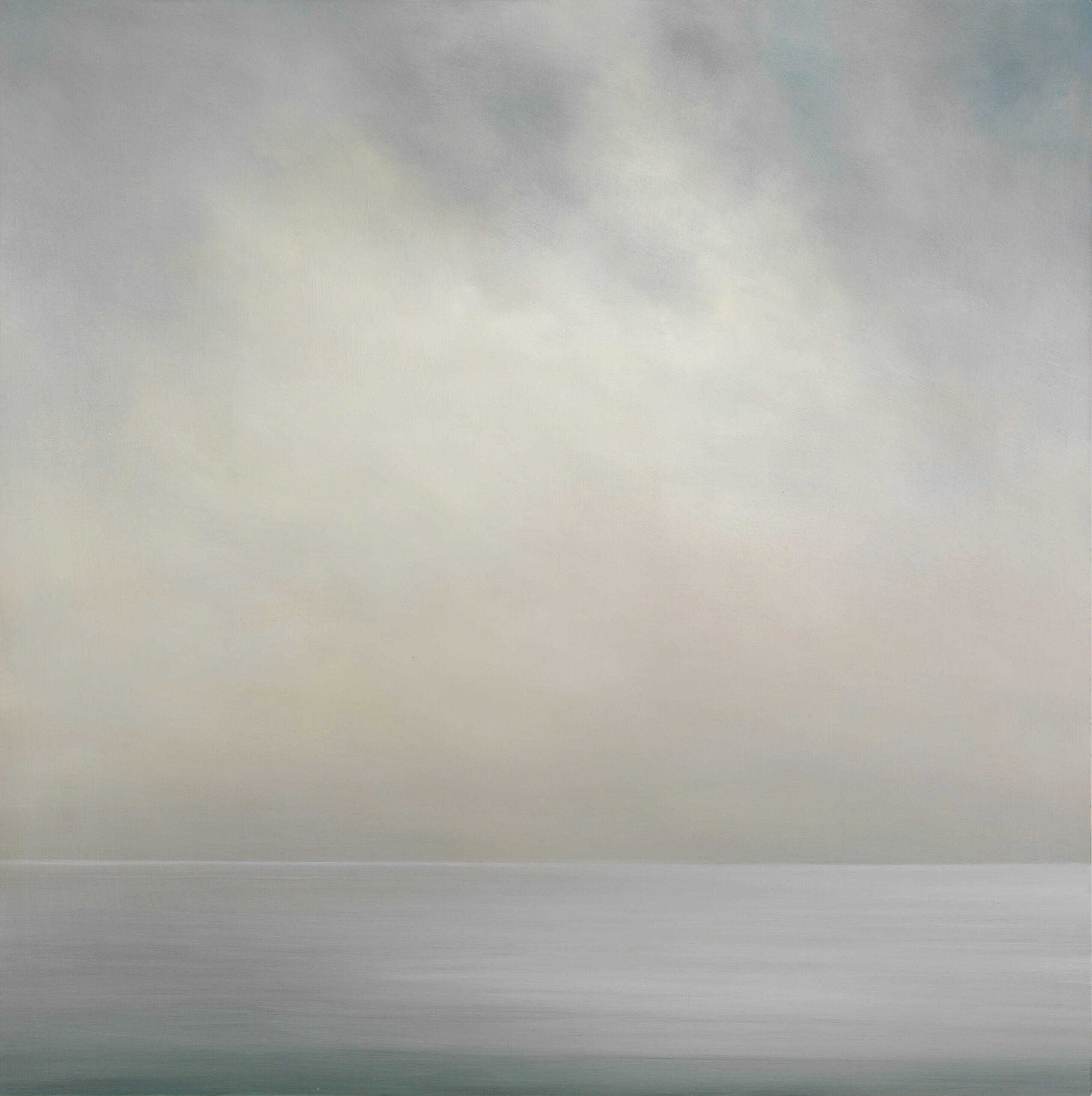1. I always want to be a better painter than I am. There’s a gap between what I have in mind and what I end up creating with paint through the movements of my body. The images I carry in my mind have no form and therefore no specificity. These images, I realize now, are not actually visual, in the same way someone can conjure up a mental image of a loved one’s face or a familiar place. Thus, they are not images I can ever recreate because they don’t exist, not even in my mind. They start in my gut and radiate outward towards my toes, the top of my head, my fingertips. What I’m trying to paint is an ache.
2. If we want to talk about desire, a gnawing ache for something we don’t yet have, or for something we’ve lost, we can say that we yearn for the transformation that the satisfaction of our desire will bring. It’s not that we long for an object. We long for transformation.
3. I’m not sure when I began associating place and space with ache, but I’m certain it has to do with my family moving away from New Orleans when I was five, then spending the rest of my childhood returning for short visits several times a year. New Orleans is seductive, its damp, fragrant air an invitation to shed your skin and adopt a looser way of being. Even a child feels this. For me, as a child, it was also the place where I had more cousins than I could count, plus several family members one, two, even three generations older than I was. It was where Christmas happened and where school was elsewhere. New Orleans became the place where I lived a vivid, occasional life.
4. At my grandfather’s house in New Orleans, there was a swimming pool. Its water was so warm that it hardly qualified as a place to cool off, only as a place to splash and float. We did handstands and somersaults and flips in that pool, imagining our girl bodies vaulting through air instead of through pale blue chlorine the temperature of human sweat.
5. I have buoyant memories of painting back when I was in nursery school, back in New Orleans. There were child-sized easels and big jars containing tempera paint. I liked the slippery feel of paint on a brush against a sheet of newsprint. I remember watching my paintings become brown as I slid the blue paint into red paint into green paint into yellow paint into black paint. I watched what happened when one color collided with another on my sheet of newsprint. But it’s not the visual memory I think of first. It’s the feel of the brush in my hand and all those wet sliding colors on their way to becoming mud. It felt good. My mother tells me that I would come home with sheets of paper caked with dried paint, from one edge to another, and tell her elaborate stories of what they were all about. Then, I had a stroke on my right side and was hospitalized overnight for this peculiar event, a temporary one-sided paralysis that disappeared in a few hours just as mysteriously as it had appeared. Afterwards, according to my mother, my nursery school paintings became red. Red, red, red. The color of determination and survival, my mother discovered, and knew I would be okay. I think she was proud of my red paintings.
6. In Chicago, I live in a climate very different from the one in which I was born. While I know people who will jump into Lake Michigan at all times of year, my own window for swimming in its massive, chilly waters is five months, tops. I start swimming in May when the water is still so cold it wrenches the breath from my lungs and snaps my capillaries shut. I forgive it because I know it will soon loosen its ferocious grip on my body and I will be able to expand and luxuriate in its vastness. I get out of the lake in October when it starts to pinch me again. On the upside, there are no poisonous snakes in Lake Michigan.
7. When I swim in the lake, I like to look at the way light and shadow ripple on the underside of the water’s surface as I turn my head to breathe. I want to fix in my memory how the shape of light changes as I move my head through the water. I want what I see before my eyes when I’m swimming to appear in my paintings. But I know that what I see with my eyes is much more complex than what I can recreate in paint, and if I truly want to fix the shape of the water’s light in my memory, I would do best to photograph it as I swim, which I may do some day. What I love about the water is its fluidity, and while paint has fluid qualities, a finished painting is still.
8. One early morning in late August, I was swimming with my friends in high waves. The sky was clear, but the east wind pushed the water towards shore with a velocity that made the tops of the waves tatter, then dissolve into a vigorous spray. It was the kind of day in which a swimmer might well give up any aspiration of making her body shoot forward like a straight arrow and instead relax into the rise and fall of undulating water. The sun began to rise, red and fierce. We paused to watch. As light raked across the water’s surface, deep green in its troughs and luminous gray as it swelled to its heights, the red-orange sun shone through the spray at the tops of the waves. “The water’s on fire!” we shouted. The heaving, massive weight holding our swimmers’ bodies afloat transformed into an illusion of flames, like a moment of desire satisfied, and satisfied again, as each wave approached.
9. I’m not sure that I really want to stare for hours on end at a digital photograph of water, trying to use wet paint to transform one still image into another still image of a fluid thing. I’m pretty sure I don’t. I make an uneasy compromise with myself by accepting the limitations of my visual memory then making sweeping motions with my paintbrush using my muscle memory of what it feels like to swim in big water. I flail in the gap between what I think I want and what actually shows up in my painting. It is always less than I hope for, but when I see contained in my painting, on the outside of my body, something that echoes the ache inside me, I know I am done.
***
Paintings by author. Feature image: “On Either Side”; image 1: “Summer Burst”; image 2: “Between Night and Day”.







2 responses
Louise, I had the privilege of seeing one of your works in progress, I would not describe it as “still”. Stunning, thrilling, fluid – yes.
what a beautiful essay! and it made me wistfully miss being near the lake, growing up near Lake Michigan. my favorite thing about the lake is how clear it is, even very far out, you can see through to the bottom. your paintings are gorgeous, as well. Yes.
Click here to subscribe today and leave your comment.